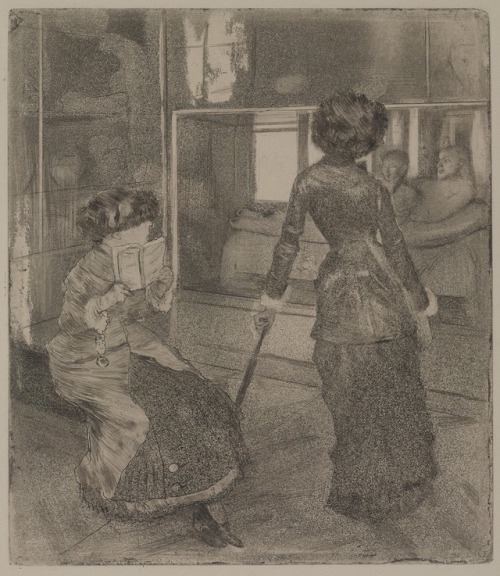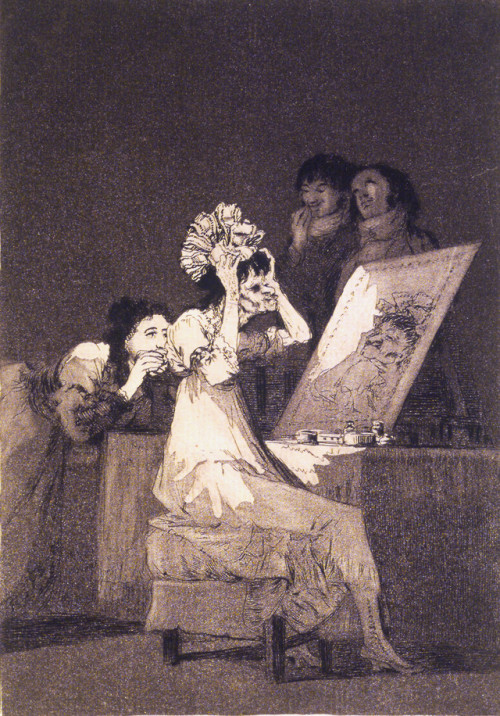Leaving a little ink on smooth areas of an etching plate can create tone. More controlled tones requ
Leaving a little ink on smooth areas of an etching plate can create tone. More controlled tones require aquatint techniques. After the line-drawn image in etched into the plate—as described in our previous post—remaining smooth areas of the plate are scattered with powdered rosin which is adhered with heat. A protective ground may be added outside of the rosined area and the pate submerged again, or acid may be painted onto the surface only in that area for a second etching. The result is a rough area that can hold ink interrupted by particles. You can see these speckles in Degas’s print, as well as brushstrokes likely created when brushed with acid that had been diluted with spit. Goya is famous for the subtle gradation of tone in his etchings which can be achieved with different densities of rosin and/or different amounts of time exposed to acid.Posted by Elizabeth TreptowEdgar Degas (French, 1834-1917). Mary Cassatt at the Louvre: The Etruscan Gallery, 1879-1880. Etching, drypoint, aquatint, and softground etching on Arches paper. Brooklyn Museum, Museum Collection Fund, 36.255 ⇨ Francisco de Goya y Lucientes (Spanish, 1746-1828). Until Death (Hasta la muerte), 1797-1798. Etching and aquatint on laid paper. Brooklyn Museum, A. Augustus Healy Fund, Frank L. Babbott Fund, and Carll H. de Silver Fund, 37.33.55 -- source link
Tumblr Blog : brooklynmuseum.tumblr.com
#bkmworksonpaper#degas#goya#edgar degas#european art#art history#art#print#printmaking#aquatint#tone#technique#material#prints#rosinsauce#plate#acid#heat#etching

